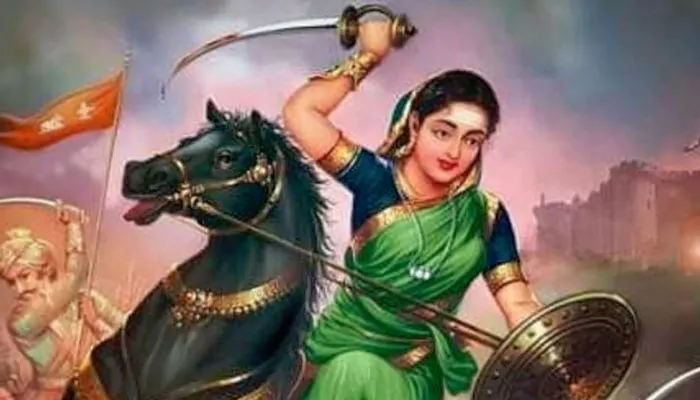
Before Jhansi’s Rani was Velu Nachiyar – a warrior queen, a strategist, and a name almost erased from memory.
In 18th-century Tamil Nadu, long before 1857, a queen dared to challenge the rising power of the British East India Company. Her name was Rani Velu Nachiyar. Born in 1730 to the royal family of Ramanathapuram, she was trained not as a passive princess but as a warrior. She mastered martial arts like Silambam and archery. She learned horse riding and was fluent in multiple languages, including French and English.
While most royal women were confined to the zenana, Velu Nachiyar was being shaped for battle.
She married Muthu Vaduganatha Thevar, the king of Sivaganga, and for a while, there was peace. But by the 1770s, the British East India Company had grown aggressive in southern India, forming alliances with local nawabs to capture small but strategic kingdoms.
In 1772, they joined forces with the Nawab of Arcot and attacked Sivaganga. The king was killed. Velu Nachiyar fled with her young daughter, Vellacci.
But this was no ordinary widow in mourning. This queen was planning her return—armed not with grief but with grit.

She found refuge in Dindigul under Gopal Naicker, a local ruler who sympathised with her cause. From exile, Velu Nachiyar began weaving her web of resistance. The Maruthu brothers, local commanders known for their bravery, joined her. She also approached Hyder Ali, the mighty ruler of Mysore and a key enemy of the British. Initially hesitant, Hyder Ali was convinced by her resolve and offered arms, cavalry, and soldiers.
It took her nearly eight years to prepare. She wasn’t just raising an army—she was building a movement.
Velu Nachiyar’s war plan wasn’t just about force. It was about strategy and symbolism. She created a women’s army—an idea unheard of in 18th-century India. One of its commanders was Kuyili, her most loyal aide.
In a bold and tragic act, Kuyili drenched herself in oil, set herself on fire, and leapt into the British ammunition depot. It exploded, crippling their supplies. That moment didn’t just win a battle—it became a symbol of unmatched sacrifice. Some even call her India’s first suicide bomber.
It wasn’t just bravery. It was brilliance in battle.
In 1780, Velu Nachiyar launched her final attack. Her forces, a combination of local rebels, Mysorean troops, and her own women warriors, stormed Sivaganga. The battle was fierce, but the British weren’t prepared for such resistance. She crushed the Company's control using surprise attacks, knowledge of terrain, and guerrilla tactics.
She reclaimed the throne—making her the first Indian queen to defeat the British in armed combat.
She ruled Sivaganga for nearly a decade and handed over the reins to her daughter Vellacci around 1790. Velu Nachiyar was a far-sighted ruler. She rebuilt temples, restructured administration, and supported war widows and displaced families. Her court included both men and women, which was an uncommon sight in those times.
Her legacy lived on through her daughter and trusted commanders, especially the Maruthu brothers, who later continued the resistance.
Maybe because her kingdom was small. Perhaps because she was a woman from the South. Perhaps because she didn’t fit into the grand narrative of 1857, but Velu Nachiyar’s story had it all—courage, strategy, diplomacy, and victory.
There are hardly any British records acknowledging her threat, because erasing her was easier than admitting defeat.
In Tamil Nadu, she is honoured as Veeramangai—the brave woman. In 2008, India issued a postage stamp in her name. Statues, plays, and books have tried to reclaim her story. Yet, she remains mostly unknown in the rest of India. No school textbook tells her tale. No Bollywood film has captured her fire. But she lit the first spark. Others followed.